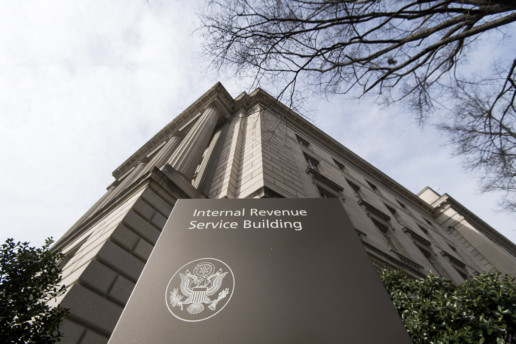PCORI Fee Is Due by July 31 for Self-Insured Health Plans
The annual fee for the federal Patient-Centered Outcomes Research Institute (PCORI) is due July 31, 2019. Plans with terms ending after September 30, 2012, and before October 1, 2019, are required to pay an annual PCORI fee. Read this article from SHRM to learn more.
An earlier version of this article was posted on November 6, 2018
The next annual fee that sponsors of self-insured health plans must pay to fund the federal Patient-Centered Outcomes Research Institute (PCORI) is due July 31, 2019.
The Affordable Care Act mandated payment of an annual PCORI fee by plans with terms ending after Sept. 30, 2012, and before Oct. 1, 2019, to provide initial funding for the Washington, D.C.-based institute, which funds research on the comparative effectiveness of medical treatments. Self-insured plans pay the fee themselves, while insurance companies pay the fee for fully insured plans but may pass the cost along to employers through higher premiums.
The IRS treats the fee like an excise tax.
The PCORI fee is due by the July 31 following the last day of the plan year. The final PCORI payment for sponsors of 2018 calendar-year plans is due by July 31, 2019. The final PCORI fee for plan years ending from Jan. 1, 2019 to Sept. 30, 2019, will be due by July 31, 2020.
In Notice 2018-85, the IRS set the amount used to calculate the PCORI fee at $2.45 per person covered by plan years ending Oct. 1, 2018, through Sept. 30, 2019.
The chart below shows the fees to be paid in 2019, which are slightly higher than the fees owed in 2018. The per-enrollee amount depends on when the plan year ended, as in previous years.
| Fee per Plan Enrollee for Payment Due July 31, 2019 |
|
| Plan years ending from Oct. 1, 2018, through Sept. 30, 2019. | $2.45 |
| Fee per Plan Enrollee for Payment Due July 31, 2018 |
|
| Plan years ending from Oct. 1, 2017, through Dec. 31, 2017, including calendar-year plans. | $2.39 |
| Plan years ending from Jan. 1, 2017, through Sept. 30, 2017 | $2.26 |
| Source: IRS. |
Nearing the End
The PCORI fee will not be assessed for plan years ending after Sept. 30, 2019, "which means that for a calendar-year plan, the last year for assessment is the 2018 calendar year," wrote Richard Stover, a New York City-based principal at HR consultancy Buck Global, and Amy Dunn, a principal in Buck's Knowledge Resource Center.
For noncalendar-year plans that end between Jan. 1, 2019 and Sept. 30, 3019, however, there will be one last PCORI payment due by July 31, 2020.
"There will not be any PCORI fee for plan years that end on October 1, 2019 or later," according to 360 Corporate Benefit Advisors.
The PCORI fee was first assessed for plan years ending after Sept. 30, 2012. The fee for the first plan year was $1 per plan enrollee, which increased to $2 per enrollee in the second year and was then indexed in subsequent years based on the increase in national health expenditures.
FSAs and HRAs
In addition to self-insured medical plans, health flexible spending accounts (health FSAs) and health reimbursement arrangements (HRAs) that fail to qualify as “excepted benefits” would be required to pay the per-enrollee fee, wrote Gary Kushner, president and CEO of Kushner & Co., a benefits advisory firm based in Portage, Mich.
As set forth in the Department of Labor's Technical Release 2013-03:
- A health FSA is an excepted benefit if the employer does not contribute more than $500 a year to any employee accounts and also offers a group health plan with nonexcepted benefits.
- An HRA is an excepted benefit if it only reimburses for limited-scope dental and vision expenses or long-term care coverage and is not integrated with a group health plan.
Kushner explained that:
- If the employer sponsors a fully insured group health plan for which the insurance carrier is filing and paying the PCORI fee and the same employer sponsors an employer-funded health care FSA or an HRA not exempted from the fee, employers should only count the employees participating in the FSA or HRA, and not spouses or dependents, when paying the fee.
- If the employer sponsors a self-funded group health plan, then the employer needs to file the form and pay the PCORI fee only on the number of individuals enrolled in the group health plan, and not in the employer-funded health care FSA or HRA.
An employer that sponsors a self-insured HRA along with a fully insured medical plan "must pay PCORI fees based on the number of employees (dependents are not included in this count) participating in the HRA, while the insurer pays the PCORI fee on the individuals (including dependents) covered under the insured plan," wrote Mark Holloway, senior vice president and director of compliance services at Lockton Companies, a benefits broker and services firm based in Kansas City, Mo. Where an employer maintains an HRA along with a self-funded medical plan and both have the same plan year, "the employer pays a single PCORI fee based on the number of covered lives in the self-funded medical plan (the HRA is disregarded)."
Paying PCORI Fees
Self-insured employers are responsible for submitting the fee and accompanying paperwork to the IRS, as "third-party reporting and payment of the fee is not permitted for self-funded plans," Holloway noted.
For the coming year, self-insured health plan sponsors should use Form 720 for the second calendar quarter to report and pay the PCORI fee by July 31, 2019.
"On p. 2 of Form 720, under Part II, the employer needs to designate the average number of covered lives under its applicable self-insured plan," Holloway explained. The number of covered lives will be multiplied by $2.45 for plan years ending on or after Oct. 1, 2018, to determine the total fee owed to the IRS next July.
To calculate "the average number of lives covered" or plan enrollees, employers should use one of three methods listed on pages 8 and 9 of the Instructions for Form 720. A white paper by Keller Benefit Services describes these methods in greater detail.
Although the fee is paid annually, employers should indicate on the Payment Voucher (720-V), located at the end of Form 720, that the tax period for the fee is the second quarter of the year. "Failure to properly designate 'second quarter' on the voucher will result in the IRS's software generating a tardy filing notice, with all the incumbent aggravation on the employer to correct the matter with the IRS," Holloway warned.
A few other points to keep in mind: "The U.S. Department of Labor believes the fee cannot be paid from plan assets," he said. In other words, for self-insured health plans, "the PCORI fee must be paid by the plan sponsor. It is not a permissible expense of a self-funded plan and cannot be paid in whole or part by participant contributions."
In addition, PCORI fees "should not be included in the plan's cost when computing the plan's COBRA premium," Holloway noted. But "the IRS has indicated the fee is, however, a tax-deductible business expense for employers with self-funded plans," he added, citing a May 2013 IRS memorandum.
SOURCE: Miller, S. (2 July 2019) "PCORI Fee Is Due by July 31 for Self-Insured Health Plans" (Web Blog Post). Retrieved from https://www.shrm.org/resourcesandtools/hr-topics/benefits/pages/2019-pcori-fees.aspx
IRS Seeks Comments on Form W-4 Overhaul for 2020
A draft of the 2020 Form W-4 was released on May 31, by the IRS. This new version includes included major revisions that were designed to make accurate income-tax withholding easier for employees. Continue reading this blog post to learn more.
On May 31, the IRS released a draft 2020 Form W-4 with major revisions designed to make accurate income-tax withholding easier for employees, starting next year. The IRS also posted FAQs about the new form and asked for comments on the changes by July 1.
The form is not for immediate use, the IRS emphasized, and employers should continue to use the current Form W-4 for 2019.
"The primary goals of the new design are to provide simplicity, accuracy and privacy for employees, while minimizing burden for employers and payroll processors," IRS Commissioner Charles Rettig said.
The new form reflects changes made by the Tax Cuts and Jobs Act, which took effect last year. For instance, the revised form eliminates the use of withholding allowances, which were tied to the personal exemption amount—$4,050 for 2017, now suspended. It also replaces complicated worksheets with more straightforward questions.
Addressing a key employer concern, the IRS said that employees who have submitted Form W-4 in any year before 2020 will not need to submit a new form because of the redesign. Employers can compute withholding based on information from employees' most recently submitted Form W-4, if employees choose not to adjust their withholding using the revised form.
Easier for Employees, More Complex for Employers
"Generally, the new Form W-4 is an improvement for employees," said Pete Isberg, vice president of government relations at payroll and HR services firm ADP. It shifts the burden of several calculations from employees to the employer, he noted. "For example, previously. employees would complete a difficult worksheet to convert expected deductions to a number of withholding allowances. With the new form, they'll just enter their full-year expected deductions over the standard deduction amount."
Because existing employees won't have to complete a new Form W-4, "employers must still observe their current Form W-4 withholding allowances," Isberg said. "However, for employees hired after 2019—and anyone that wants to adjust their withholding after 2019—the 2020 version will be the only valid Form W-4."
Not requiring employees to submit the new W-4 will ease HR's burden, but it also means that "payroll systems will need to accommodate the existing withholding allowance calculation, as well as the new method," which could make reprogramming payroll systems more arduous, said Mike Trabold, director of compliance at Paychex, an HR technology services and payroll provider.
In addition to supporting two distinct withholding systems, employers will need to accommodate three sets of withholding calculations, Isberg said:
- The old system based on withholding allowances.
- The 2020 system with a checkbox for optional higher withholding.
- The 2020 system that allows employees to input new data, listed below in the W-4 forms comparison chart.
| 2019 Form W-4 | 2020 Form W-4 (draft) |
| Number of withholding allowances. | Checkbox for multiple jobs or optional higher withholding. |
| Per-payroll additional amount to withhold. | Full-year child and dependent tax credits. |
| Full-year other (non-wage) income. | |
| Full-year deductions (over the standard deduction amount). | |
| Per-payroll additional amount to withhold. |
"One interesting question is how long employers might need to support the old and new systems simultaneously," Isberg said. "It will probably be many years before the last withholding allowances [used by current employees] drop off."
Addressing Privacy Concerns
In June 2018, the IRS issued an earlier revision of Form W-4 and instructions for 2019. But in September 2018, the IRS said it would delay major revisions until 2020 to respond to criticism about the form's release date and complexity.
"We anticipate this version will be better received than the prior draft," Trabold said. The earlier version "asked for much more specific information on other sources of income, such as second jobs, spousal income, non-earned income, etc., which was intended to increase withholding accuracy but which many taxpayers may have felt to be invasive and wouldn't necessarily want to share with their employer."
With the new version of the form, taxpayers can check a box "to indicate their desire to have more tax withheld, without having to share details with their employer," Trabold said. Although this may lead to too much withholding for some taxpayers, "it will help address concerns of those who prefer to get a refund check every year or who may have had to unexpectedly pay tax when filing this year," he explained.
While there will be a worksheet to help taxpayers with the new form, "it will not be provided to the employer, further assuring privacy," Trabold noted.
What's Next
The IRS said it plans to release a "close to final" version of the form in late July, after which employers and payroll administrators can start making programming changes to their systems. A final version, expected in November, will contain only minor adjustments.
The IRS also plans to release instructions for employers in the next few weeks for comment.
In the meantime, the IRS encouraged employees to use its online Paycheck Checkup tool to ensure they're having the right amount of tax withheld. While useful in its current form, the tool will be updated to reflect the new W-4 when it becomes final.
SOURCE: Miller, S. (6 June 2019) "IRS Seeks Comments on Form W-4 Overhaul for 2020" (Web Blog Post). Retrieved from https://www.shrm.org/ResourcesAndTools/hr-topics/compensation/Pages/IRS-seeks-comments-on-Form-W-4-overhaul-for-2020.aspx
U.S. Department of Labor's New Compliance Assistance Tool
On February 6, 2019, the U.S. Department of Labor announced the launch of the electronic version of their Compliance Assistance Tool (Handy Reference Guide to the Fair Labor Standards Act (FLSA)). This new version will assist employers by providing them with basic Wage and Hour Division (WHD) information, as well as links to other resources.
This electronic resource was created as a part of the WHD's efforts to modernize compliance assistance tools, as well as provide easy-to-use, accessible compliance information. In coexistence with worker.gov, employer.gov, and other online tools, this tool will help improve employer understanding of federal labor laws and regulations.
View the digital Compliance Assistance Tool here.
Read the DOL's full press release here.
SOURCE: U.S. Department of Labor (6 February 2019) "U.S. Department of Labor Announces New Compliance Assistance Tool" (Web Press Release). Retrieved from https://www.dol.gov/newsroom/releases/whd/whd20190206-0
Developing guidance could free employers from ACA mandate
A future path for employers to avoid ACA employer mandate penalties was outlined in a recent IRS notice. Read this blog post from Employee Benefits News to learn more.
A recent IRS notice provides a future path for employers to avoid ACA employer mandate penalties by reimbursing employees for a portion of the cost of individual insurance coverage through an employer-sponsored health reimbursement arrangement.
While the notice is not binding and at this stage is essentially a discussion of relevant issues, it does represent a significant departure from the IRS’s current position that an employer can only avoid ACA employer mandate penalties by offering a major medical plan.
Here is everything employers need to know.
Background: As described in more detail in a previous update, the ACA currently prohibits (except in limited circumstances) an employer from maintaining an HRA that reimburses the cost of premiums for individual health insurance policies purchased by employees in the individual market.
Proposed regulations issued by the IRS and other governmental agencies would eliminate this prohibition, allowing an HRA to reimburse the cost of premiums for individual health insurance policies (individual coverage HRA) provided that the employer satisfies certain conditions.
The preamble of the proposed regulations noted that the IRS would issue future guidance describing special rules that would permit employers who sponsor individual coverage HRAs to be in full compliance with the ACA’s employer mandate. As follow up, the IRS recently issued Notice 2018-88, which is intended to begin the process of developing guidance on this issue.
On a high level, the ACA’s employer mandate imposes two requirements in order to avoid potential tax penalties: offer health coverage to at least 95% of full-time employees (and dependents); and offer “affordable” health coverage that provides “minimum value” to each full-time employee (the terms are defined by the ACA and are discussed further in these previous updates).
Offering health coverage to at least 95% of full-time employees: Both the proposed regulations and notice provide that an individual coverage HRA plan constitutes an employer-sponsored health plan for employer mandate purposes. As a result, the proposed regulations and notice provide that an employer can satisfy the 95% offer-of-coverage test by making its full-time employees (and dependents) eligible for the individual coverage HRA plan.
Affordability: The notice indicates that an employer can satisfy the affordability requirement if the employer contributes a sufficient amount of funds into each full-time employee’s individual coverage HRA account. Generally, the employer would have to contribute an amount into each individual coverage HRA account such that any remaining premium costs (for self-only coverage) that would have to be paid by the employee (after exhausting HRA funds) would not exceed 9.86% (for 2019, as adjusted) of the employee’s household income.
Because employers are not likely to know the household income of their employees, the notice describes that employers would be able to apply the already-available affordability safe harbors to determine affordability as it relates to individual coverage HRAs. The notice also describes new safe harbors for employers that are specific to individual coverage HRAs, intending to further reduce administrative burdens.
Minimum value requirement: The notice explains that an individual coverage HRA that is affordable will be treated as providing minimum value for employer mandate purposes.
Next steps: Nothing is finalized yet. Employers are not permitted to rely on the proposed regulations or the notice at this time. The proposed regulations are aimed to take effect on Jan. 1, 2020, if finalized in a timely matter. The final regulations will likely incorporate the special rules contemplated by the notice (perhaps with even more detail). Stay tuned.
This article originally appeared on the Foley & Lardner website. The information in this legal alert is for educational purposes only and should not be taken as specific legal advice.
SOURCE: Simons, J.; Welle, N. (17 January 2019) "Developing guidance could free employers from ACA mandate" (Web Blog Post). Retrieved from https://www.benefitnews.com/opinion/developing-guidance-could-free-employers-from-aca-mandate?brief=00000152-14a5-d1cc-a5fa-7cff48fe0001
From HSA to 401(k) contribution limits, 11 numbers to know for 2019
Do you offer HSAs, FSAs or 401(k)s to your employees? There are many important numbers companies and employees need to know regarding HSAs, FSAs and 401(k)s. Read this blog post to learn more.
There are a slew of important figures companies and employees need to know regarding health savings accounts, 401(k)s and flexible spending accounts. While the IRS announced HSA changes in May, the agency only recently announced annual changes to FSAs and 401(k)s. From contribution limits to out-of-pocket amounts, here are the figures employers need to know — all of which take effect in January.
$19,000: 401(k) pre-tax contribution limits
$6,000: 401(k) catch-up contribution limit
$6,000: IRA contribution limits
$3,500: Annual HSA contribution limit for individuals
$7,000: HSA contribution limit for family coverage
$1,350: HDHP minimum deductible for individual
$2,700: HDHP minimum deductible for family
$6,750: HDHP maximum out-of-pocket amounts (individual)
$13,500: HDHP maximum out-of-pocket amounts (family)
$1,000: HSA catch-up contributions
$2,700: FSA contribution limit
SOURCE: Mayer, K. (6 December 2018) "From HSA to 401(k) contribution limits, 11 numbers to know for 2019" (Web Blog Post). Retrieved from https://www.benefitnews.com/list/from-hsa-to-401-k-contribution-limits-11-numbers-to-know-for-2019
2019: A Look Forward
A number of significant changes to group health plans have been made since the Affordable Care Act (ACA) was enacted in 2010. Many of these changes became effective in 2014 and 2015 but certain changes to a few ACA requirements take effect in 2019.
Changes for 2019
- Cost-sharing Limits – Non-grandfathered plans are subject to limitations on cost sharing for essential health benefits (EHB). The annual limits on cost sharing for EHB are $7,900 for self-only coverage and $15,800 for family coverage, effective January 1, 2019.
- Health plans with more than one service provider can divide maximums between EBH as long as the combined amount does not exceed the out-of-pocket maximum limit for the year.
- Beginning in 2016, each individual – regardless of the coverage the individual is enrolled – is subject to the self-only annual limit on cost sharing.
- The ACA’s annual cost-sharing limits are higher than high deductible health plans (HDHPs) out-of-pocket maximums. For plans to qualify as an HDHP, the plan must comply with HDHP’s lower out-of-pocket maximums. The HDHP out-of-pocket maximum for 2019 is $6,750 for self-only coverage and $13,500 for family coverage.
- Coverage Affordability Percentages – If an employee’s required contribution does not exceed 9.5 percent of their household income for the taxable year (adjusted each year), then the coverage is considered affordable. The adjusted percentage for 2019 is 9.86 percent.
- Reporting of Coverage – Returns for health plan coverage offered or provided in 2018 are due in early 2019. For 2018, returns must be filed by February 28, 2019, or April 1, 2019 (if electronically filed). Individual statements must be provided by January 31, 2019.
- ALEs are required to report information to the IRS and their eligible employees regarding their employer-sponsored health coverage. This requirement is found in Section 6056. Reporting entities will generally file Forms 1094-B and 1095-B under this section.
- Every health insurance issuer, self-insured health plan sponsor, government agency that provides government-sponsored health insurance, and any other entity that provides MEC is required to finalize an annual return with the IRS, reporting information for each individual who is enrolled. This requirement is found in Section 6055. Reporting entities will generally file Forms 1094-C and 1095-C under this section.
- ALEs that provide self-funded plans must comply with both reporting requirements. Reporting entities will file using a combined reporting method on Forms 1094-C and 1095-C.
- Forms Used for Reporting – Reporting entities must file the following with the IRS:
- A separate statement for each individual enrolled
- A transmittal form for all returns filed for a given calendar year.
- Electronic Reporting – Any reporting entity that is required to file 250 or more returns in either section must file electronically on the ACA Information Returns (AIR) Program. Reporting entities that file less than 250 returns can file in paper form or electronically on the ACA Information Returns (AIR) Program.
- Penalties – Entities that fail to comply with the reporting requirements are subject to general reporting penalties for failure to file correct information returns and failure to furnish correct payee statements. Penalty amounts for failure to comply with the reporting requirements in 2019 are listed below:
| Penalty Type | Per Violation | Annual Maximum | Annual Maximum for Employers with up to $5 million in Gross Receipts |
| General | $270 | $3,275,500 | $1,091,500 |
| Corrected within 30 days | $50 | $545,500 | $191,000 |
| Corrected after 30 days but before August 1 | $100 | $1,637,500 | $545,500 |
| Intentional Disregard | $540* | None | N/A |
**Intentional disregard penalties are equal to the greater of either the listed penalty amount or 10 percent of the aggregate amount of the items required to be reported correctly.
Expected Changes
- Health FSA Contributions – Effective January 1, 2018, health FSA salary contributions were limited to $2,650. The IRS usually announces limit adjustments at the end of each year. This limit does not apply to employer contributions or limit contributions under other employer-provided coverage.
- Employer Shared Responsibility Regulations – The dollar amount for calculating Employer Shared Responsibility 2 penalties is adjusted for each calendar year. Applicable large employers (ALEs) must offer affordable, minimum value (MV) healthcare coverage to full-time employees and dependent children or pay a penalty. If one or more full-time employees of an ALE receive a subsidy for purchasing healthcare coverage through an Exchange, the ALE is subject to penalties.
- Applicable Large Employer Status – ALEs are employers who employ 50 or more full-time employees on business days during the prior calendar year.
- Offering Coverage to Full-time Employees – ALEs must determine which employees are full-time. A full-time employee is defined as an employee who worked, on average, at least 30 hours per week or 130 hours in a calendar month. There are two methods for determining full-time employee status:
- Monthly Measurement Method – Full-time employees are identified based on a month-to-month analysis of the hours they worked.
- Look-Back Measurement Method – This method is based on whether employees are ongoing or new, and whether they work full time or variable, seasonal or part-time. This method involves three different periods:
- Measurement period – for county hours of service
- Administration period – for enrollment and disenrollment of eligible and ineligible employees
- Stability period – when coverage is provided based on an employee’s average hours worked.
- Applicable Penalties – ALEs are liable for penalties if one or more full-time employees receive subsidies for purchasing healthcare coverage through an Exchange. One of two penalties may apply depending on the circumstances:
- 4980H(a) penalty – Penalty for not offering coverage to all full-time employees and their dependents. This penalty does not apply if the ALE intends to cover all eligible employees. ALEs must offer at least 95 percent of their eligible employees’ health care coverage. Monthly penalties are determined by this equation:
- ALE’s number of full-time employees (minus 30) X 1/12 of $2,000 (as adjusted), for any applicable month
- The $2,000amount is adjusted for the calendar year after 2014:
- $2,080 – 2015; $2,160 – 2016; $2,260 – 2017; $2,320 – 2018
- 4980H(b) penalty – penalty for offering coverage – ALEs are subject to penalties even if they offer coverage to eligible employees if one or more full-time employees obtain subsidies through an Exchange because:
- The ALE didn’t offer all eligible employees coverage
- The coverage offered is unaffordable or does not provide minimum value.
- Monthly penalties are determined by this equation: 1/12 of $3,000 (as adjusted) for any applicable month
- $3,120 – 2015; $3,240 – 2016; $3,390 – 2017; $3,480 – 2018
- 4980H(a) penalty – Penalty for not offering coverage to all full-time employees and their dependents. This penalty does not apply if the ALE intends to cover all eligible employees. ALEs must offer at least 95 percent of their eligible employees’ health care coverage. Monthly penalties are determined by this equation:
Contact one of our advisors for assistance or if you have any questions about compliance in the New Year.
SOURCES: www.dol.gov, www. HHS.gov, https://www.federalregister.gov/documents/2018/04/17/2018-07355/patient-protectionand-affordable-care-act-hhs-notice-of-benefit-and-payment-parameters-for-2019, https://www.irs.gov/e-fileproviders/air/affordable-care-act-information-return-air-program
IRS bumps up 401(k) contribution limit for 2019
Do you offer a retirement plan to your employees? The IRS recently raised the annual contribution cap for 401(k) and other retirement plans. Continue reading to find out what the new contribution caps are.
Participants in 401(k) and other defined contribution retirement accounts will see their annual contribution cap raised from $18,500 to $19,000 in 2019, according to the Internal Revenue Service.
The catch-up contribution limit on defined contribution plans remains unchanged at $6,000.
Savers with IRAs will see the annual contribution cap raised from $5,500 to $6,000 — the first time the cap on IRA deferrals has been raised since 2013. The annual catch-up contribution for savers age 50 and over will remain at $1,000.
Cost-of-Living Adjustment (COLA) increases will also be applied to the deduction phase-out scale for IRA owners who are also covered by a workplace retirement plan:
- for single filers the scale will be $64,000 to $74,000, up $1,000
- for joint filers where the spouse contributing to an IRA is also covered by a workplace plan, the phase-out slot increase to $103,000 to $123,000
- for an IRA contributor whose spouse is covered by a plan, the income phase-out is $193,000 to $2003,000
Single contributors to Roth IRAs will see the income phase-out range increase to $122,000 to $137,000, up $2,000 from last year. For married couples filing jointly the range will increase to $193,000 to $203,000, up $4,000 from last year.
More low and moderate-income families may be able to claim the Saver’s Credit on their tax returns for contributions to retirement savings plans. The threshold increases $1,000 for married couples, to $64,000; $48,000 for head of households, up $750; and $32,000 for singles and single filers, up $500 from last year.
The deferred compensation limit in defined contribution plans for pre-tax and after-tax dollars will increase $1,000, to $56,000. And the maximum defined benefit annual pension will increase $5,000, to $225,000.
SOURCE: Thornton, N. (1 November 2018) "IRS bumps up 401(k) contribution limit for 2019" (Web Blog Post). Retrieved from https://www.benefitspro.com/2018/11/01/irs-bumps-401k-contribution-limit-for-2019/
IRS updates required tax notice to address plan loan offsets
The model notices that all plan sponsors are required to send to plan participants before they receive an eligible rollover distribution from qualified plans were recently updated by the IRS. Continue reading to learn more.
The IRS has updated the model notice that is required to be provided to participants before they receive an “eligible rollover distribution” from a qualified 401(a) plan, a 403(b) tax-sheltered annuity, or a governmental 457(b) plan.
Notice 2018-74, which was published on September 18, 2018, modifies the prior safe-harbor explanations (model notices) that were published in 2014. Like the 2014 guidance, the 2018 Notice — sometimes referred to as the “402(f) Notice” or “Special Tax Notice” — includes two separate “model” notices that are deemed to satisfy the requirements of Code Section 402(f): one for distributions that are not from a designated Roth account, and one for distributions from a designated Roth account. The 2018 Notice also includes an appendix that can be used to modify (rather than replace) existing safe-harbor 402(f) notices.
The model notices were updated to take into consideration certain legislation that has been enacted, and other IRS guidance that has been published, since 2014. They include:
- changes related to qualified plan loan offsets under the Tax Cuts and Jobs Act of 2017;
- changes in the rules for phased retirement under the Moving Ahead for Progress in the 21st Century Act (“MAP-21”);
- changes in the exceptions to the 10% penalty for early distributions from governmental plans under the Defending Public Safety Employees’ Retirement Act; and
- IRS guidance (in Revenue Procedure 2016-47) regarding a self-certification procedure for waivers of the 60-day rollover deadline.
The model notices also make some “clarifying” changes to the 2014 notices, including:
- clarification that the 10% additional tax on early distributions applies only to amounts includible in income;
- an explanation of how the rollover rules apply to governmental 457(b) plans that include designated Roth accounts;
- clarification that certain exceptions to the 10% tax on early distributions do not apply to IRAs; and
- recognizing that taxpayers affected by federally declared disasters and other events may have an extended deadline for making rollovers.
The updated model 402(f) notices should be particularly useful in communicating to participants the extension, under the Tax Cuts and Jobs Act, of the time to roll over a “qualified plan loan offset amount.”
Inside the plan load offset
By way of background, Notice 2018-74 reminds us that distribution of a “plan loan offset amount” is an eligible rollover distribution, and that a “plan loan offset” occurs when, under the plan terms governing a plan loan, the participant’s accrued benefit is reduced, or offset, in order to repay the loan. According to the Notice, this can occur when, for example, the terms of the plan loan require that, in the event of an employee’s termination of employment or request for a distribution, the loan is to be repaid immediately or treated as in default.
The Notice also indicates that a plan loan offset may occur when, under the terms of the plan loan, the loan is canceled, accelerated, or treated as if it were in default (for example, when the plan treats a loan as in default upon an employee’s termination of employment or within a specified period thereafter). The Notice also reminds us, however, that a plan loan offset cannot occur prior to a distributable event.
This is helpful guidance for distinguishing between a “deemed distribution” of a defaulted loan (a taxable event which is not eligible for rollover) and a “plan loan offset amount,” which is an eligible rollover distribution.
Generally, if a default occurs before the participant has a distributable event (such as termination of employment, or attainment of age 59½), and the default is not cured by the last day of the cure period, it must be treated as a “deemed distribution” and reported on Form 1099. Such defaulted amounts are not eligible for rollover.
However, if the default occurs at or after a distribution event, and the plan terms require that the participant’s account be offset to pay off the loan, then the reduction of the account may be treated as a plan loan offset, which is an eligible rollover distribution.
Notice 2018-74 (and the new model notices) also reflect that, prior to the Tax Cuts and Jobs Act of 2017, participants who incurred a “plan loan offset” only had 60 days to “roll” an equivalent amount of money to an IRA or another employer plan (to avoid the offset being treated as a taxable distribution). However, for plan loan offsets that occur after December 31, 2017, if the plan loan offset is a “qualified plan loan offset” (meaning it occurs in connection with termination of employment or termination of the plan), then the participant has significantly more time (until the extended due date of the participant’s tax return for the year of the offset) in which to roll an amount equal to the loan offset amount to an IRA or another employer plan.
SOURCE: Browning, R (4 October 2018) "IRS updates required tax notice to address plan loan offsets" (Web Blog Post). Retrieved from https://www.employeebenefitadviser.com/opinion/irs-updates-required-tax-notice-to-address-plan-loan-offsets?brief=00000152-146e-d1cc-a5fa-7cff8fee0000
Business meal deductions likely here to stay after new IRS guidelines
Business meal deductions are expected to continue to qualify for deductions. After much confusion following the IRS’s decision to end deductions for client entertainment, they are expected to release guidance regarding business meal deductions. Read on to learn more.
Employers wondering whether they can still deduct business meals from their tax returns may soon be getting an answer from the Internal Revenue Service.
The agency is expected to release guidance saying that business meals will continue to be 50% deductible, according to an article in the Wall Street Journal.
The confusion over the deductibility of business meals stems from the IRS’s decision to end deductions for client entertainment, a move that was part of the government’s tax overhaul. Previously, the entertainment-related deduction was 50% of qualified expenses.
The elimination of deductions for client entertainment left many tax professionals wondering whether client meals might be considered entertainment and therefore no longer qualify for deductions.
The anticipated IRS guidance — which comes at the urging of the American Institute of Certified Public Accountants and other groups — is expected to preserve the 50% deduction for the cost of meals with clients and elaborate on how the 50% meal write-off meshes with entertainment expenses, the Wall Street Journal said.
If a business owner or employee, for example, takes a client to a ballgame, the cost of the tickets is not deductible because the expense is for entertainment. Hots dogs and drinks purchased at the event, however, could still be 50% deductible, the IRS is expected to say, according to the Wall Street Journal.
The IRS, which did not respond to a request for comment, is not likely to change the normal requirements corporate executives must meet to take deductions for client meals.
They must discuss business with the client before, during and after the meal, and the meal must not be “lavish or extravagant,” the Wall Street Journal said.
SOURCE: Correia, M. (28 September 2018) "Business meal deductions likely here to stay after new IRS guidelines" (Web Blog Post). Retrieved from https://www.benefitnews.com/news/business-meal-deductions-likely-here-to-stay-after-new-irs-guidelines?brief=00000152-14a5-d1cc-a5fa-7cff48fe0001
5 reasons to offer a student loan repayment benefit in 2019
Are you looking for ways to help add more value to your talent through your 2019 benefits packages? Continue reading to learn why you should offer student loan repayment as one of your employee benefits.
With human resources managers across the country working to finalize their 2019 benefits packages this month, many are asking themselves: How can we add more value for our talent and help the company grow? For many employers, the answer is helping employees manage their student loan debt.
Over the years, student loan debt has reached an astronomical sum. As of 2008, college tuition fees rose by 439% from 1982. And by the first quarter of 2018, 44 million Americans owed a total of $1.5 trillion in student loan debt, exceeding both credit card debt and auto loan debt, according to the Federal Reserve. Not only is this an extreme amount of debt, but has also taken an enormous emotional toll, with more than half of college-educated adults (54%) surveyed by Laurel Road in 2018 feeling that they will never make enough money to reach their financial goals.
Fast forward to today, and borrowers are seeking creative ways to tackle their debt and save more. Recently, in a private ruling, the IRS granted Abbott Laboratories, a national healthcare company, the option to contribute to employee 401(k) plans based on the employee’s student loan payments. Other companies — from corporate behemoths to busy startups — have partnered with student loan refinancing companies to offer employees refinancing options that can help them save, often at no cost to the company.
With Americans quitting their jobs at the fastest rate since 2001, keeping employees happy is imperative. And part of keeping millennials happy is to provide practical benefits, not just the fun perks. Employees are looking to foster meaningful relationships with their employers — so looping in student loan repayment benefits can pay off for both the employer and the employee.
So what’s to gain? Here are some of the top reasons employers should consider incorporating student loan repayment benefits into their 2019 benefits package.
1. Recruit, retain and stand out
2. It’s flexible and free
3. Eliminate the student loan vs. retirement conflict
4. Help employees save
One of the reasons why the student loan benefit is attractive for employees is the significant savings it can lead to. If refinancing is an option, employees have the potential to save thousands of dollars over the life of their loan through a lower loan interest rate and lower monthly payments.
In the long run, the cumulative savings can add up to several thousand dollars or more. Employers should keep in mind that the savings amount will change depending on the financing company you choose to work with. Many can offer employer customers exclusive rates, which leads to even greater savings.
5. Boost morale and productivity
According to another benefits company, 31% of employees surveyed say their money concerns affect their work. Meanwhile, 74% of people feel stress daily about their student loan debt and spend time at work thinking about it, impacting their overall productivity in the workplace. So in addition to the hard savings employees are earning through these programs, they are also rewarded with the soft benefits of reduced stress and anxiety at work.
With student loan debt reaching record highs in recent years, employers have recognized that there’s a crucial need to provide employees with options to help them pay down their student loan debt. And when options like refinancing come at no cost to them, this benefit will likely become more popular. In the future, we can expect more employers to pave the way for student loan repayment programs. Will you be one of the trailblazers?









